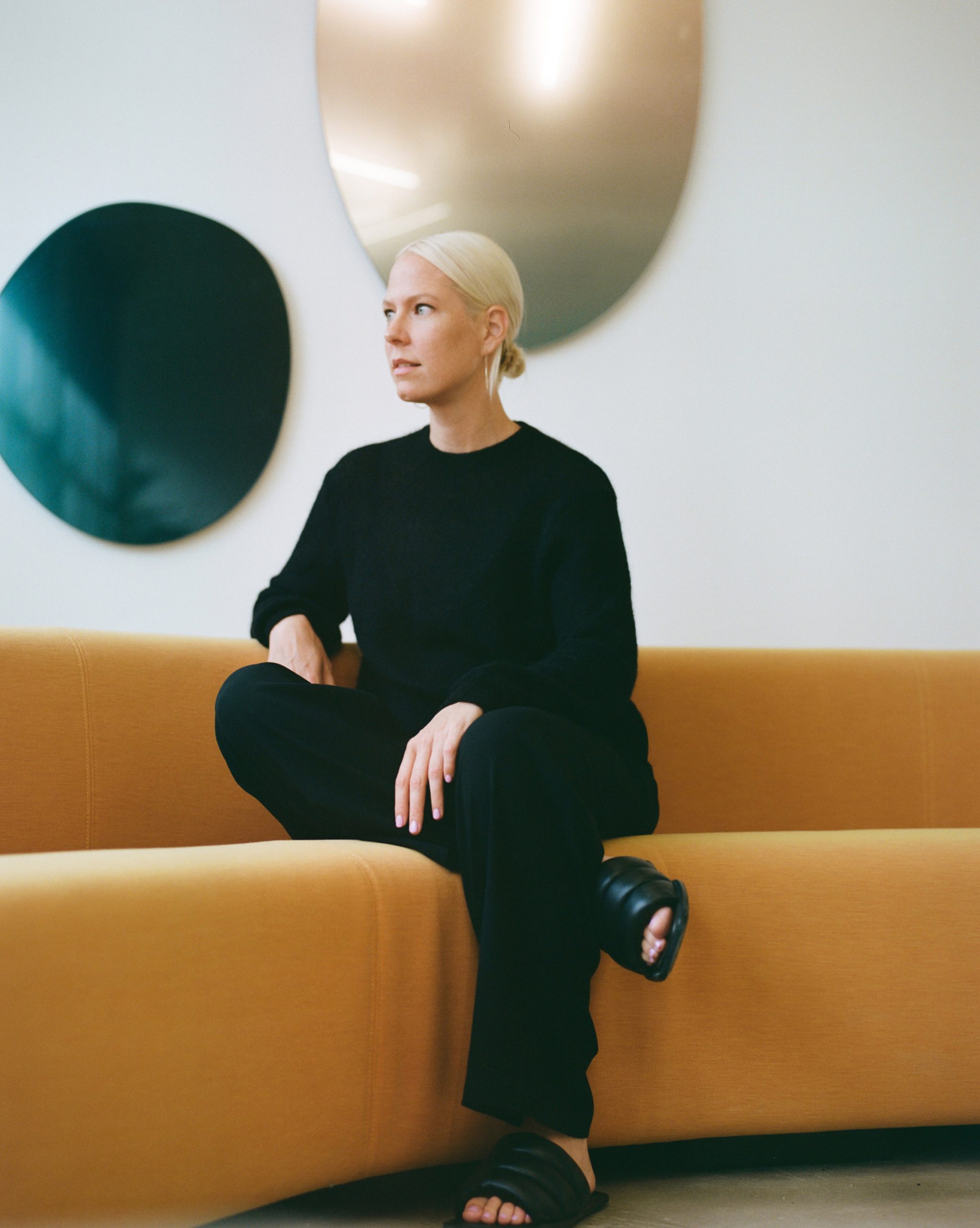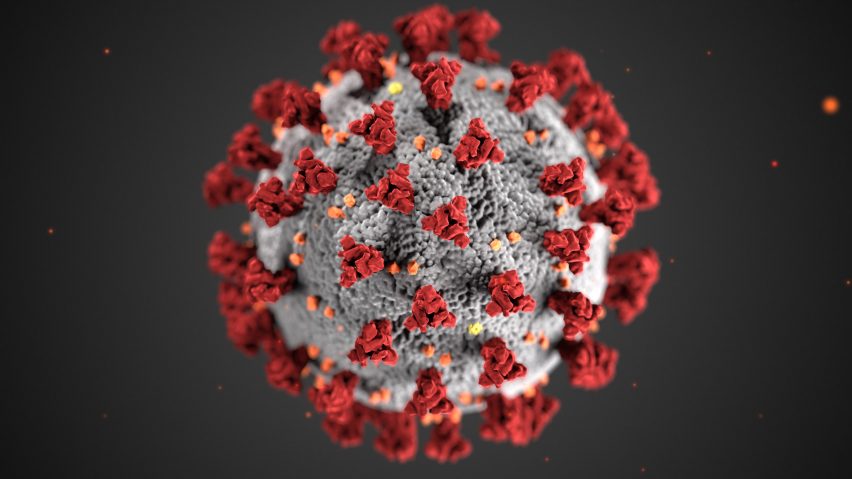
Norman Foster, Virgil Abloh and more share their thoughts on the global impact of Covid-19
One year ago today, the World Health Organisation officially declared coronavirus a global pandemic. Twenty one of the world's leading designers, including Thomas Heatherwick, Kelly Hoppen and Sevil Peach, gave us their views on how it has changed the world.
The pandemic has been the most dramatic disruption to human activity in a generation. For many designers, it has been a time to refocus and rethink how we design products, buildings and cities.
"It has challenged us to reassess the 'old normals' that we had based and organised our lives around," explained interior designer Peach.
"Coronavirus has sounded an alarm"
This includes paying more attention to the environment and the impact that humans are having on the Earth.
"The coronavirus has sounded an alarm," said Sun Dayong, founding partner of architecture studio Penda, "in effect, reminding people to care for the earth and the environment."
Many of the designers were positive that the pandemic will lead to change, with more focus placed on people.
"It has made us value space and air, said Sarah Wigglesworth, founder of Sarah Wigglesworth Architects. "Hopefully, it has reorientated our focus on the fact that buildings are about people."
"Disasters have been catalysts for major changes in architecture"
Designer Heatherwick agreed: "We've seen before that disasters have been catalysts for major changes in architecture."
"So I hope the real positive legacy of this terrible pandemic will be a realisation that there's no longer a place for yet more lazy soulless developments and buildings."
To make these changes, Off-White founder Virgil Abloh believes that designers will need to be adaptable.
"The pandemic, to me, exposed the need for businesses, designers, creators, even entire countries, to be able to adapt," he said.
"The structure of the city is bound to change"
The architects and designers believe that the pandemic will have a lasting impact on our cities, with Lina Ghotmeh telling Dezeen: "The structure of the city is more than any time, bound to change."
Nikoline Dyrup Carlsen, co-founder of Spacon & X, agreed that cities are changing, observing that people are moving out of Copenhagen "to be closer to nature".
"This will definitely reframe how we approach design and architecture in urban as well as in natural surroundings," she said.
Many of the designers believe that the pandemic may provide the impetus to create better public spaces in our cities.
"[They will be a] more open attitude of mind by the public, civic leaders and politicians to change in the public domain," said architect Norman Foster.
"The pandemic has proven that mobility in cities can be moderated posing an opportunity to reduce the use of cars, and therefore the CO2 emissions," added Ingrid Moye, co-founder of Mexican studio Zeller & Moye.
"Cities are not dead and will come back"
Although cities will change, they "are not dead and will come back," said Carlo Ratti Associati founder Carlo Ratti.
"They have endured damaging pandemics in the past and yet in the following centuries, we continued crowding its narrow streets and theatres," he said.
Chinese architect Ma Yansong believes the challenge will be creating cities that are safe, but not isolating places.
"Even if the pandemic might continue through the next couple of years, an ideal city should still reflect our ideal for living, instead of being a capsule that will only isolate people," he said.
"Moments of crisis can also be seen as opportunities for change"
On a personal level, many designers said the pandemic had allowed them to become more focused on their work without the distraction of industry events or overseas client visits.
"Despite the negative aspects that the pandemic has brought, moments of crisis can also be seen as opportunities for change," said Moye. "This pause in our hectic lifestyles has given me a chance to refocus priorities."
Overall, architect Sam Jacob believes that this has been a time of reflection that will shape architecture and design for years to come.
"It feels like there's been quite a bit of soul searching amongst the design and architecture communities over the past year," he said. "Many long overdue issues have come to the fore."
Top image is an illustration of the coronavirus particle by the Centers for Disease Control and Prevention (CDC).
Read below for the full interviews:
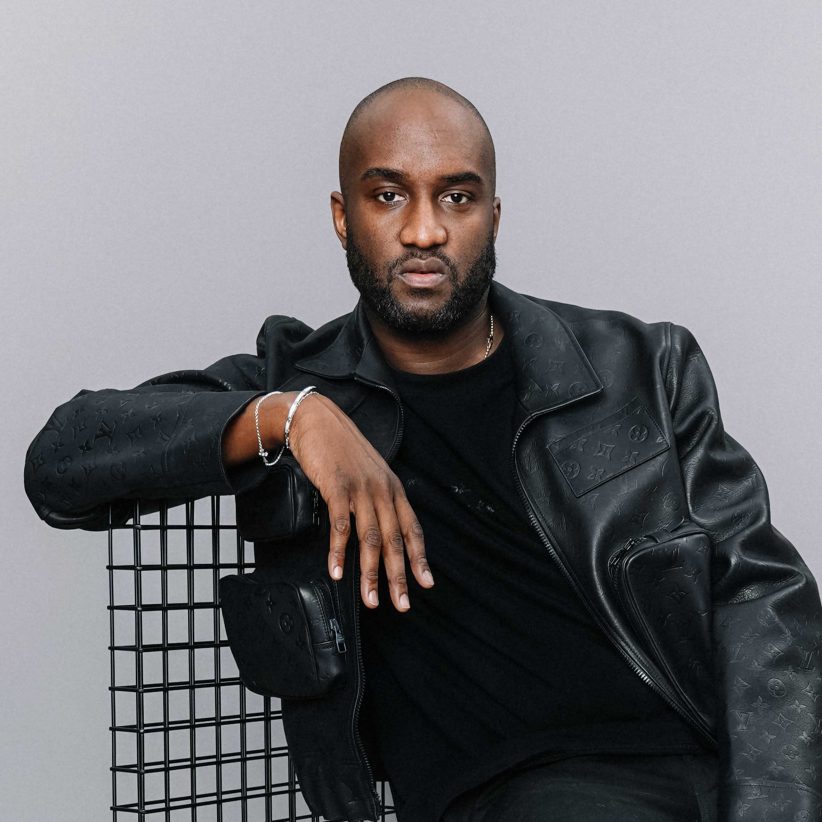
"Creators and countries need to be able to adapt"
Virgil Abloh
CEO, Off-White, Milan
How has the pandemic impacted architecture and design?
The pandemic, to me, exposed the need for businesses, designers, creators, even entire countries, to be able to adapt. I see the same challenge being posed in this realm of architecture and design – as creators we must be adaptable and fluid in our skills and our practices, but the places and structures we're creating need this ability as well.
This is something I had kind of already started thinking about, the need for spaces to be easily transformed. When I was designing the Off-White Miami flagship with Samir Bantal of AMO we wanted to create a retail space that essentially can outlive retail.
Things like movable walls and other elements that make a space multifunctional are not only interesting from a design perspective, but they're necessary for staying ahead of this ever-changing tide.
What will the long-term impact be?
I think we're going to see a lot of the same social and political movements that were brought to the forefront of our collective consciousness reflected in design for years to come.
Things like transparency and openness, as we've seen society demand of politics and their leaders, their police and their justice systems. The idea of personal expression and celebrating differences – customising your space like you do your own style with the clothes you wear and the pieces you buy.
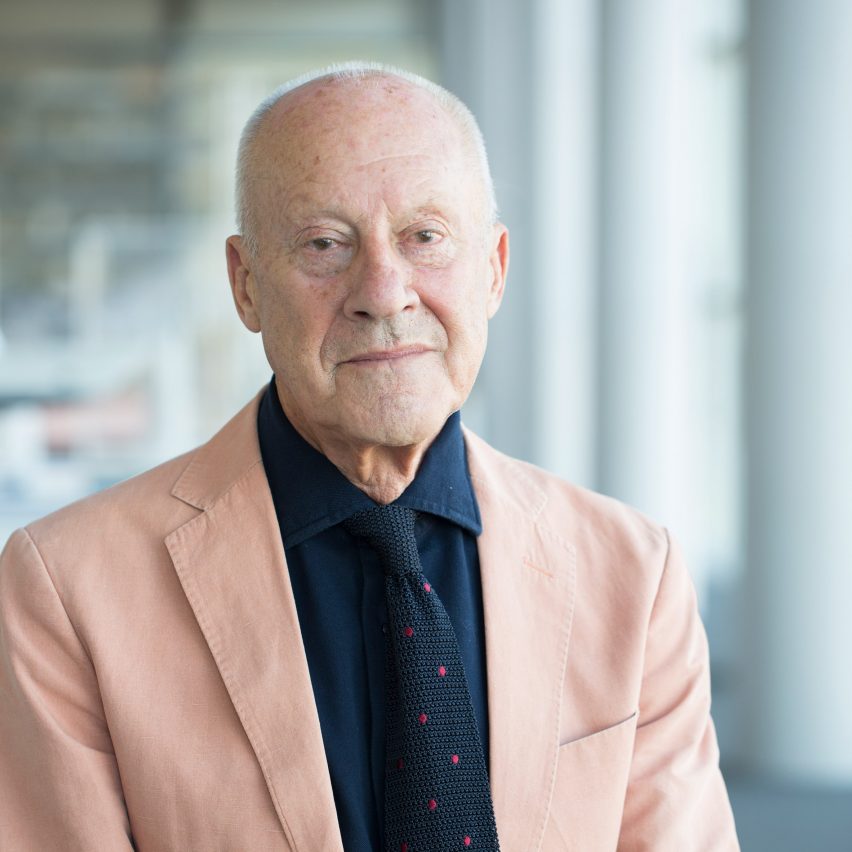
"A more open attitude to change"
Norman Foster
Founder, Foster + Partners, London
How has the pandemic impacted architecture and design?
More open attitude of mind by the public, civic leaders and politicians to change in the public domain.
What will the long-term impact be?
Acceleration and magnification of existing trends to the extent that in the short term they might seem like new trends.
What have you learnt?
A greater appreciation and sensitivity towards those who serve us – obviously health workers but also others who make our urbanities function.

"The industry is booming"
Kelly Hoppen
Founder, Kelly Hoppen Interiors, London
How has the pandemic impacted architecture and design?
One of the biggest surprises for me came at the beginning of the pandemic when there was an influx of work, particularly international work. The speed and demand of work that came through during the pandemic provided an opportunity to grow further. In my view, the industry is booming, however, the requirements for design are changing.
Having worked in Asia for many years, we understood many of these requirements, but this was the first time I understood them personally and realised the impact they would have on the field.
What will the long-term impact be?
Long-term, interiors and architecture will have to be created with hygiene and practicality at the forefront. Both vision and design details will need to be adapted to ensure space adheres to everyday living, with the additional demands highlighted by Covid in a post-pandemic world.
What have you learnt?
In spite of strict travel restrictions, the inability to visit sites and engage in other practical activities meant we had to think outside the box quickly.
We had come up with different solutions to fulfil things we could only do in person, for example handling an installation for a couture job. Being able to overcome these challenges has been both exciting and rewarding, and has also taught me about the endless possibilities that exist when it comes to showcasing international design and architecture.
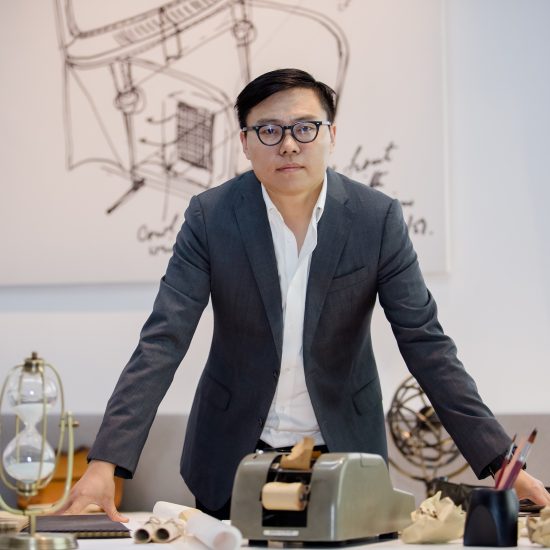
"Coronavirus has sounded an alarm"
Sun Dayong
Founding partner, Penda, Beijing
How has the pandemic impacted architecture and design?
I think the coronavirus pandemic has made people realise that having architectural spaces that are secure and safeguarded is extremely important. In times past, the primary function of architectural structures was to shelter human beings from the elements and predatory animals. In the future, protecting people from viruses will be one of the important functions of architecture.
This aspect will be paid more and more attention to in design. For example, the need to revise the distribution ratio of open space and private space in spatial layouts will promote the forming of new design specifications; and the need for sterilization and sterilization technology in architectural materials will instigate the production of new products. This will undoubtedly lead to changes in the way future buildings are designed.
What will the long-term impact be?
I think the coronavirus pandemic has made people realise that human beings are vulnerable to nature and that we cannot ignore the impact of the earth's environment on our lives. In the past, people were content to stay in air-conditioned rooms or a comfortable car, without giving a second thought to the environment or nature.
It was easy to ignore news of global warming or rising sea levels – it seemed those issues were just the dry concerns of environmental experts, empty claims in the advertisements of real estate developers. But the emergence of the coronavirus has made everyone realise that these problems are, in fact, very real.
The pandemic has been massively damaging and costly worldwide. It is conceivable that if other, more severe environmental problems develop, many more people's lives will be adversely affected.
The coronavirus has sounded an alarm, in effect reminding people to care for the earth and the environment. As a shaper of the environment, architects should seriously consider sustainable design strategies, and put forward feasible suggestions for shaping a healthy environment in the future.
What have you learnt?
The pandemic has given me the opportunity to stay at home and live with my family for an extended period of time. It has made me realise the importance of relationships in general, and that good family relations are the baseline for having a happy life.
For this type of harmony to be formed, frank communication and heart-to-heart communication are really essential. Architects can help people create beautiful and warm spaces, but a happy life is a collective effort created by everyone – and each person is the architect of their own happiness.
Love the people around us and build happiness with love. I think this is what every professional architect should keep in mind, and learn to "create with love".
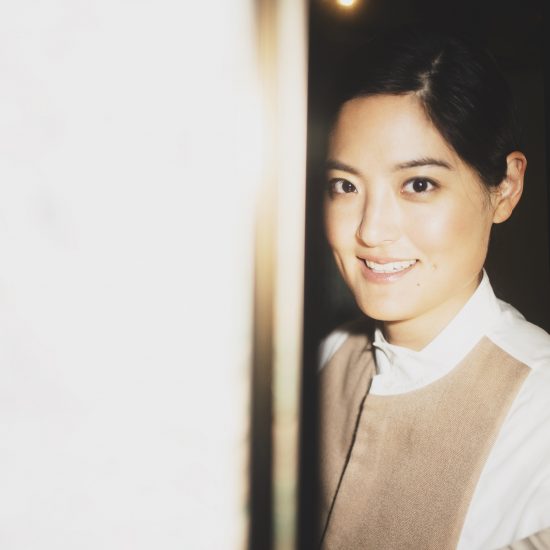
"It's socially acceptable to be a hermit"
Joyce Wang
Founder, Joyce Wang Studio, London
How has the pandemic impacted architecture and design?
It's made it socially acceptable to be a bit of a hermit and to socially distance. Restaurants and hotels were becoming social houses before the pandemic. Now we are seeing project briefs that call for a balance of social and anti-social spaces to be designed.
What will the long-term impact be?
Use of naturally sterilising finishes and materials for high-touch points like doorknobs and faucets, people will still yearn for tactility so am hoping it doesn't all migrate to sensor/touchless devices.
What have you learnt?
We, humans, are super resilient and can adapt to be happy, creative and even thrive in the most awkward of circumstances.
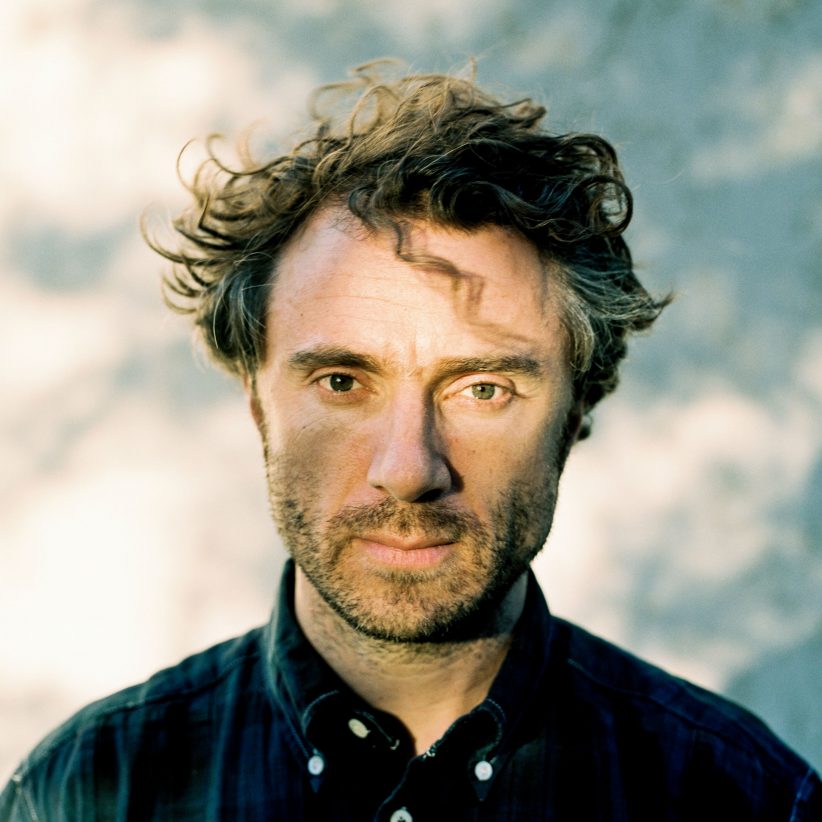
"We must strive harder"
Thomas Heatherwick
Founder, Heatherwick Studio, London
How has the pandemic impacted architecture and design?
Even before the global pandemic, there was already an immense and rapidly-growing problem of many un-human, sterile places being clumsily created around the world. Apart from the occasional predictably-special arts building or rich person's house, cities have been increasingly made up of repetitious new developments and districts that lack life, human interest and joy and generally don't make people feel good to be there.
As we've been forced to immerse ourselves in the digital realm during the pandemic, we've discovered that technology in our homes can sometimes provide a better alternative to crappy public places.
For me it's exciting that the responsibility is now back on us – the designers, architects, developers, and planners – to start making an impact again by creating inspiring public places that people will cherish and want to spend time in.
What will the long-term impact be?
I believe that one long term impact of coronavirus will be that we'll value places that bring us together a little bit more. But I also believe we'll be looking for places that better reflect the true diversity of our society.
For the last hundred years, architecture has been a closed profession that tends to be led by like-minded people with similar backgrounds. We've seen before that disasters have been catalysts for major changes in architecture.
I hope there can now be a new entrepreneurial spirit after the pandemic that allows more people to be unafraid of thinking they can have a voice in architecture even if they don't necessarily want to design the sort of buildings they currently see around them. I also now personally hope there will be opportunities for far more diversity in the types of buildings that are being made.
What have you learnt?
I've always been fascinated by public shared experience – and believe passionately in advocating for great public spaces that help us connect better with each other but, deprived of meeting up with each other for a year, this is now something we crave more than ever.
I hate seeing missed opportunities that don't adequately serve us and our communities and society as a whole. So I hope the real positive legacy of this terrible pandemic will be a realisation that there's no longer a place for yet more lazy soulless developments and buildings.
Instead, we must strive harder to create places that galvanize and inspire people. Whatever sustainability metrics and credentials they claim to possess; unless we have the real passion of people who use and experience the buildings and spaces we design, they will never be truly sustainable.

"China is almost back to normal"
Ma Yansong
Founder, MAD Architects, Beijing
How has the pandemic impacted architecture and design?
One of the biggest impacts is, the pandemic changed our ways of living and working. Lack of face-to-face communication and more reliance on e-meetings in some ways more important for us, but it does prevent us from engaging in usual conversations which are more interactive. The industry in China is almost back to normal after a year.
What will the long-term impact be?
"Sharing" used to be one of the most important agenda in the industry. We used to make a lot of efforts to providing more open space to stimulate social interactions.
However, the pandemic led to more discussions on isolation and social distancing, rather than sharing and co-living. However, in the long run, public space will still be the foundation for sharing our cities, and architects will face challenging times to reconsider other meanings of public space.
Even if the pandemic might continue through the next couple of years, an ideal city should still reflect our ideal for living, instead of being a capsule that will only isolate people.
What have you learnt?
The pandemic is huge for us who are living on this planet at this age. But if we look at linear history, the pandemic might be just the tip of the iceberg. Nature still dominates the world. It makes me think about the role of an architect. He or she can be alive only for several decades, but what can an architect create for the generations, or a longer run, contribute to civilisation, or even greater, this planet?

"Activity-based work is becoming the standard"
Nikoline Dyrup Carlsen
Co-founder, Spacon & X, Copenhagen
How has the pandemic impacted architecture and design?
I think we have only seen the early impacts of Covid 19, but already now we see at Spacon&X how the pandemic has caused us to work differently. New digital tools and processes have found their way into our office, optimising our ways to develop, present and produce our design.
We've been forced to present digitally and to implement new software, and it's been a game-changer for us. We've even worked with virtual design and architecture, where the end result is digital – very interesting new possibilities!
What will the long-term impact be? We founded Spacon & X on ideas of how to deal with the shortage of space in urban areas with explosively growing populations. For the first time in many years, more people are moving out of Copenhagen to be closer to nature, which we see as a partially corora-triggered trend. This will definitely reframe how we approach design and architecture in urban as well as in natural surroundings.
Working with office design and space management, we have also experienced how Covid has boosted the fluidity between working physically at the office vs at home or anywhere else. "Activity-based work" is becoming the standard, meaning we have to come up with new solutions for office workers to feel comfortable not having their own work station, and office spaces to feel vibrant even when they are half or two thirds empty.
What have you learnt? I've learnt how much value it has to be agile and flexible, Spacon&X would have suffered if we would not have been as agile and ready to identify new possibilities and adjust our plans.
I've learnt how powerful collective movements are. Experiencing how a society/a world can change behaviour that quickly and efficiently. I would never have thought that possible before.
I've also learned how much I love my job, what I do and all the people I work with! Everyone at Spacon&X has worked together in getting through this period, approaching it with an open mind, I think we are a collectively stronger office today than before Covid!:)
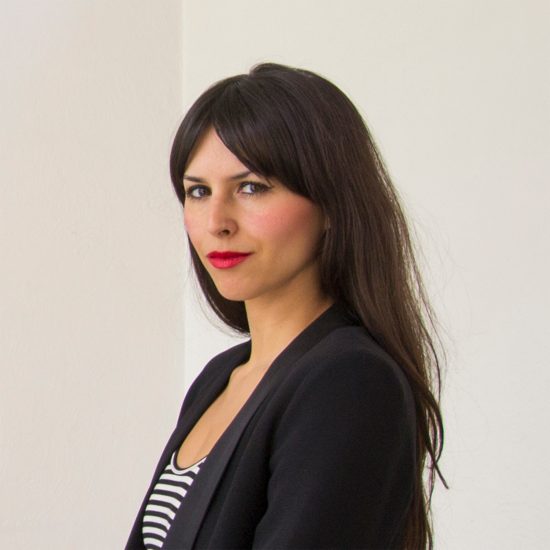
"Single-use in architecture is out-of-date"
Ingrid Moye
Co-founder, Zeller & Moye, Mexico City
How has the pandemic impacted architecture and design?
Through this pandemic, we are experiencing a lack of human contact. Cities, architecture, and design are those tangible means to human encounters, elemental to our lives.
The pandemic has proven that mobility in cities can be moderated posing an opportunity to reduce the use of cars, and therefore the CO2 emissions. It's, therefore, an opportunity to design cities for people, not for cars.
The rigid 'single use' in architecture and design appears out-of-date. Architecture and design should become more flexible and adaptable. Hybrid buildings could then cope better with emergency scenarios, and extend their own lifespans.
Design and architecture will need to re-focus on the well-being of users, providing safer environments for human interaction. Covid-19 has reminded us that the human species forms part of a larger ecosystem that we need to live in harmony with. Architecture and design have the responsibility to make a positive impact on our environment.
What will the long-term impact be?
I hope it will be the awareness of recovering our endangered ecosystem, after facing our vulnerability as a species during this pandemic.
What have you learnt?
Despite the negative aspects that the pandemic has brought, moments of crisis can also be seen as opportunities for change. This pause in our hectic lifestyles has given me a chance to refocus priorities.
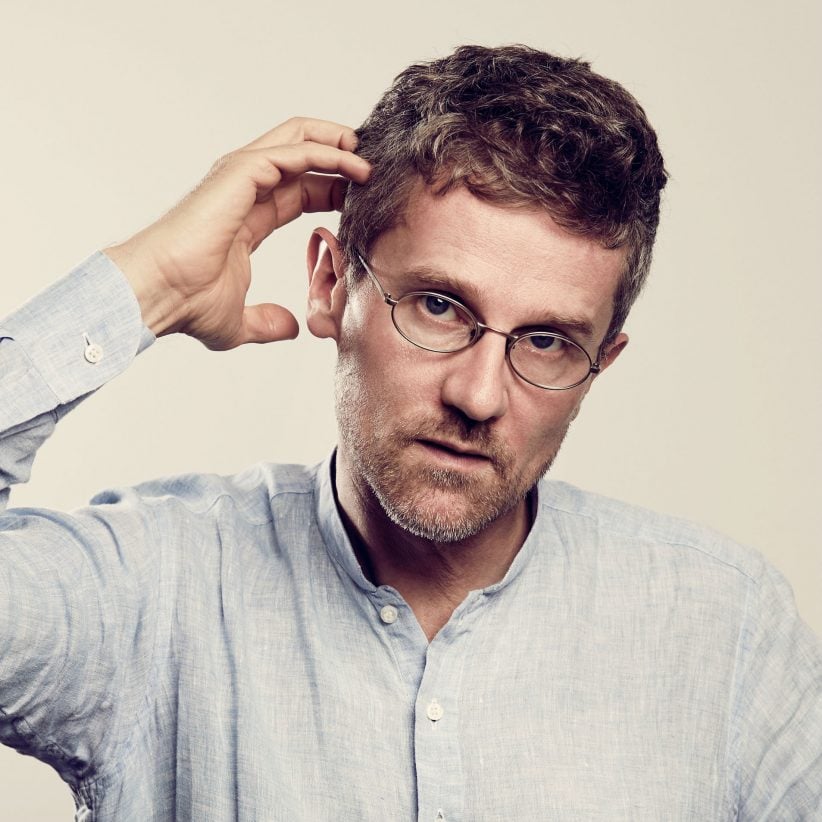
"Cities are not dead"
Carlo Ratti
Founder, Carlo Ratti Associati, Turin
How has the pandemic impacted architecture and design?
Covid highlighted the irrelevance of many architects' obsession with form – it forced us to think big again and tackle the key issues of our present (environmental crisis, technological transformations, inequalities) – which the pandemic has put into the spotlight.
Also, after countless Zoom calls in pyjamas, we can say the domestic and professional environments are getting increasingly blurred! With that, we need to rethink the design of our homes and offices.
What will the long-term impact be?
A change of paradigm in housing as well as planning: from the separation of functions (I work in a different place from where I live) to the simultaneity of functions (I work and live in the same place). This prompts us to think about a new Existenzminimum [minimum living standards] for the 21st century.
I would like to make another point. Cities are not dead and will come back. They have endured damaging pandemics in the past – in the 14th century Venice lost 60 per cent of its population because of the black death and yet, in the following centuries, we continued crowding its narrow streets and theatres.
What have you learnt?
Travelling less is not necessarily a bad thing. It allows us to reconnect with places and focus on our civic duties.
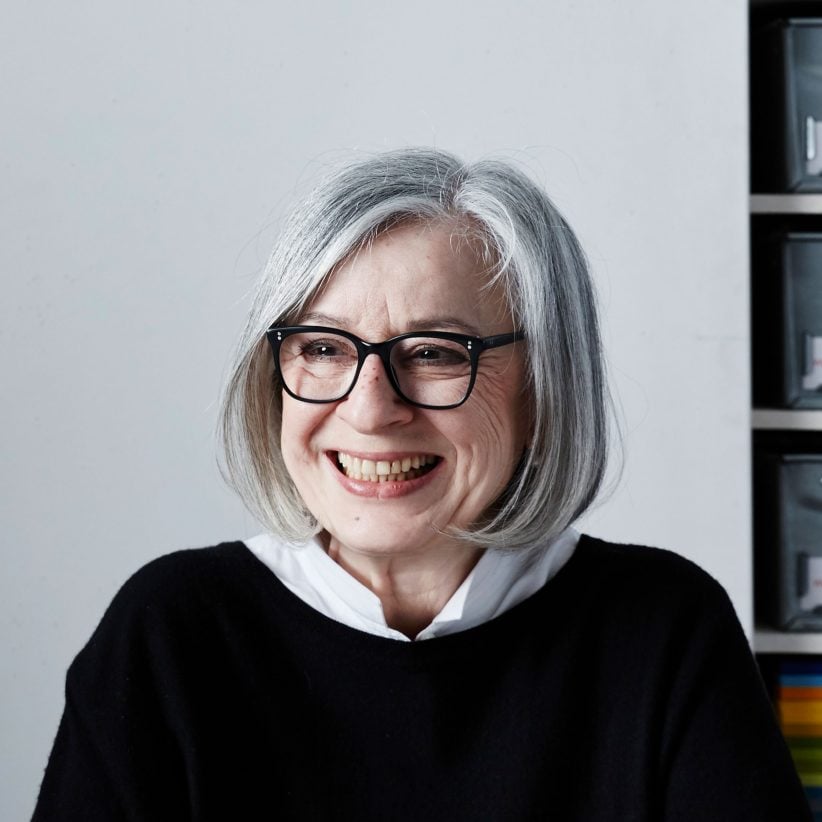
"It has challenged us to reassess old normals"
Sevil Peach
Co-founder, SevilPeach, London
How has the pandemic impacted architecture and design?
It has challenged us to reassess the "old normals" that we had based and organised our lives around. We need to reimagine what they should be and what they should provide if we were to re-invent them today.
This is particularly relevant to our homes, which we have rapidly had to adapt as best as we can so it is able to properly support us throughout our lockdown days.
This need for adaptations also refers to our workplace, which will need to reinvent itself to remain relevant and to be a place we wish & choose to go to.
What will the long-term impact be?
Architecture and design need to regain their inclusiveness and human-centricity, responding to real human needs and emotions, that our solutions need to be sustainable both at an environmental, economic and personal level, plus adaptable and responsive to changing needs.
What have you learnt?
How much we thrive on human interaction. How important spontaneity and collaboration is to the design and creative processes. How pleasant it is to reimagine our working day to migrate from our desk to an armchair, to the kitchen table, to look out at the garden, or to even to be able to work out in the garden and fresh air.
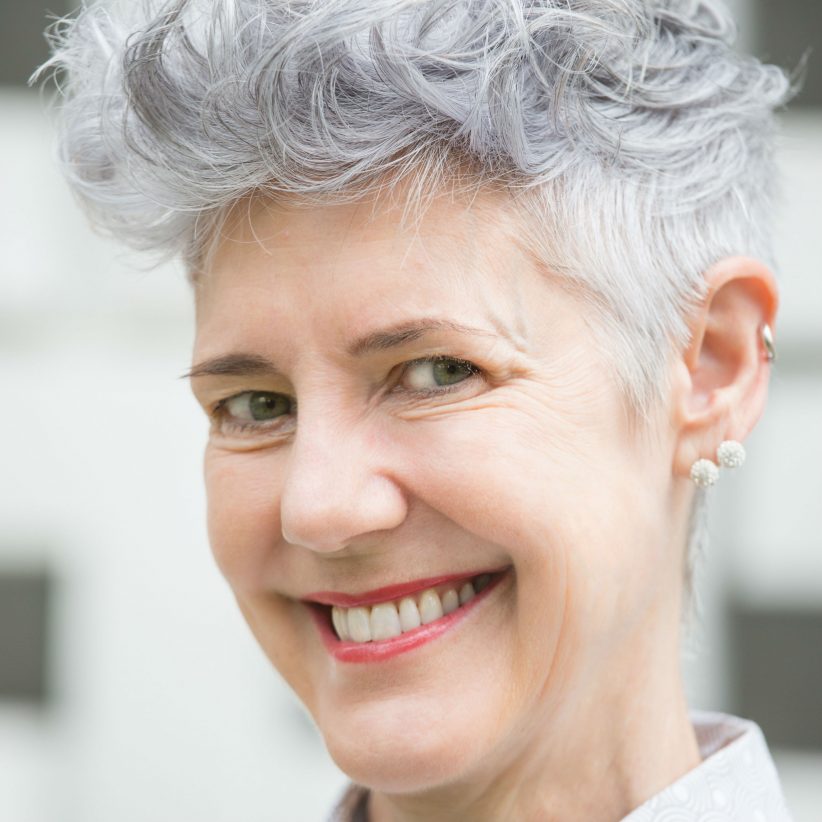
"Offices need to turn into destinations"
Astrid Klein
Co-founder, Klein Dytham Architecture, Tokyo
How has the pandemic impacted architecture and design?
It has become clear that we need more open, green, common, public spaces that are accessible to all. The densely packed floor plans don't look 'safe' anymore.
What will the long-term impact be?
In order to be able to compete with the comfort of your home, office and retail spaces need to turn into attractive destinations, appealing to physical and mental wellbeing and be conducive to simply hanging out.
What have you learnt?
With fewer business trips, commutes, out of office meetings, work has become more focused, productive and daily schedules have become more work/life balance, and there is less stress getting all dressed up every day!
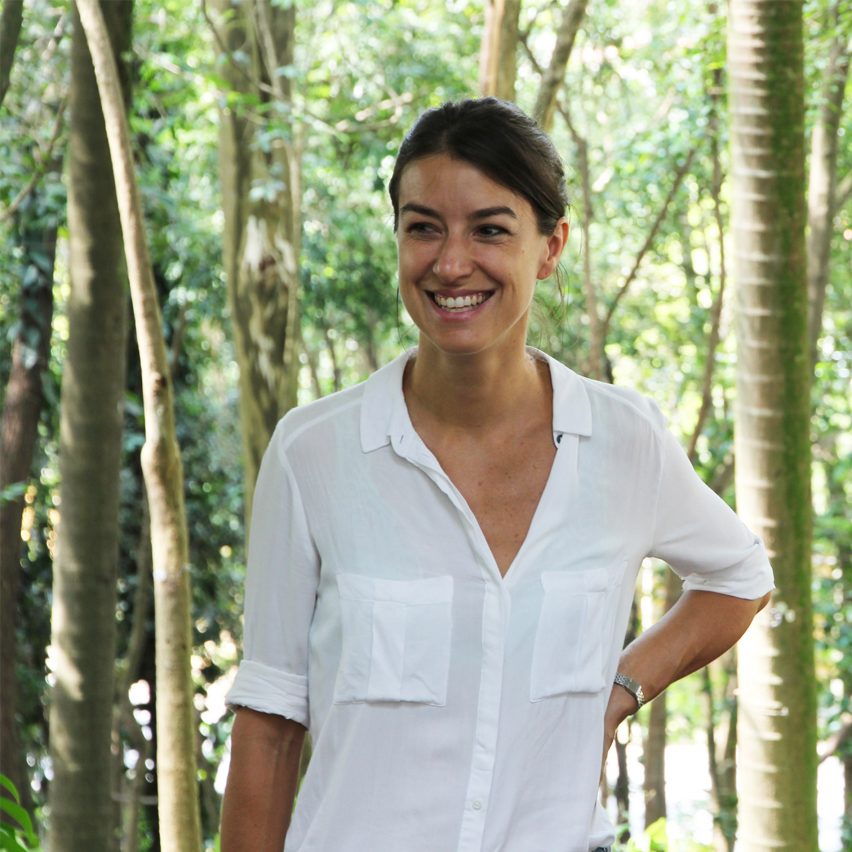
Design has an essential social function
Noelia Monteiro
Founder Estudio Flume
How has the pandemic impacted architecture and design?
Architects are learning how to communicate across borders in order to create collaborations without being physically present. We are studying structures that strategically preserve health in remote places in order to provide connection when it's necessary and to protect the most vulnerable communities.
What will the long-term impact be?
The pandemic has had an impact on how we envision reality and how we develop our practice and narratives. It is paradoxical that Manaus, the capital of Amazonas state, which produces the oxygen for the planet, didn't have oxygen to treat their patients.
Architecture and design has an essential social function and we have to work for the benefit of these places. The pandemic has brought attention to where the current architectural shortcoming lie and has motivated architects to envision new solutions.
What have you learnt?
I realise that I have more questions than conclusions. We at Estudio Flume have continued making projects and construction across different territories in Brazil, all the while being conscious of how to protect our natural environment. In both the university setting and in our office, we learn daily, students and architects how to project in communities while still considering health and safety.
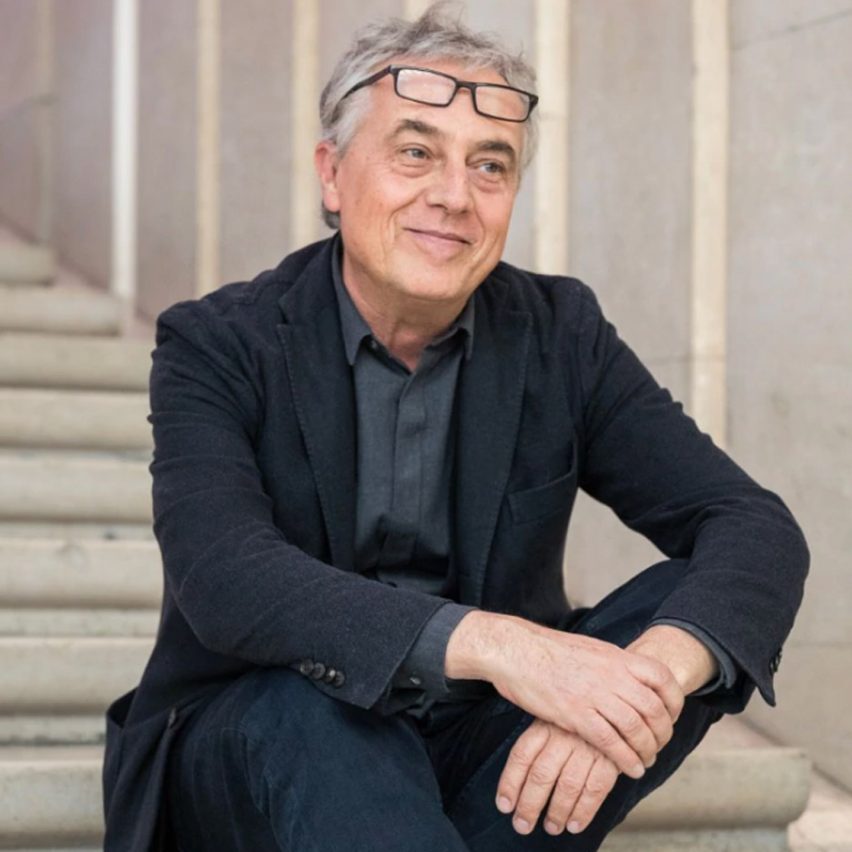
"Cities must change their very structure"
Stefano Boeri
Founder, Stefano Boeri Architetti, Milan
How has the pandemic impacted architecture and design?
We must ask ourselves if we think we can fully grasp the power of this tragedy and thus try to think of a different way of inhabiting the planet, the cities, the spaces of everyday life.
In a planet that is heading towards the great challenge of a new and necessary alliance between cities (until now the maximum expression of human civilisation) and the world of forests, woods, mountains, oceans, urban realities must become transnational and archipelago metropolises; metropolises that encompass portions of nature in their extension.
What do you think the major long-term impact of coronavirus will be on architecture and design?
Cities, in addition to opening up to nature, must change in their very structure: the great attractors of crowds and congestion on which they are born are in great difficulty today.
We should begin to think of an urban life in which every citizen has basic necessities at a reasonable distance, within a geographical radius of 500 meters and a time range of 15/20 minutes; on foot or, at most, by bicycle.
"Zoom rooms will become important spaces"
Sabine Marcelis
Founder, Studio Sabine Marcelis, Rotterdam
How has the pandemic impacted architecture and design?
The way in which we communicate our ideas. The surge of new programs that bring ideas to life when we can't physically present ideas. The newfound importance of the home and the home office.
And the fact that people are investing in their homes. Shifting from global back to local again (working with production companies/ photographers etc close to home instead of flying to or flying in people from all over the world).
What will the long-term impact be?
Communication of ideas. The shift from office work to working from home. Offices will need to be designed with importance put on hygiene and distance keeping. Zoom-rooms and smaller rooms for online meetings where your background plays a big role will be important spaces in the office also.
What have you learnt?
Not every meeting needs to be a plane trip (but some definitely would be better if they were!). The importance of the dynamic within a team. I feel incredibly fortunate that my team works so well together. Everyone is in sync with each other and we don't get lost in miscommunications at all.
It's incredibly difficult to communicate complex ideas which are all about experience and tactility from remote locations and at least this challenge is only from our team to clients and not within the team itself.
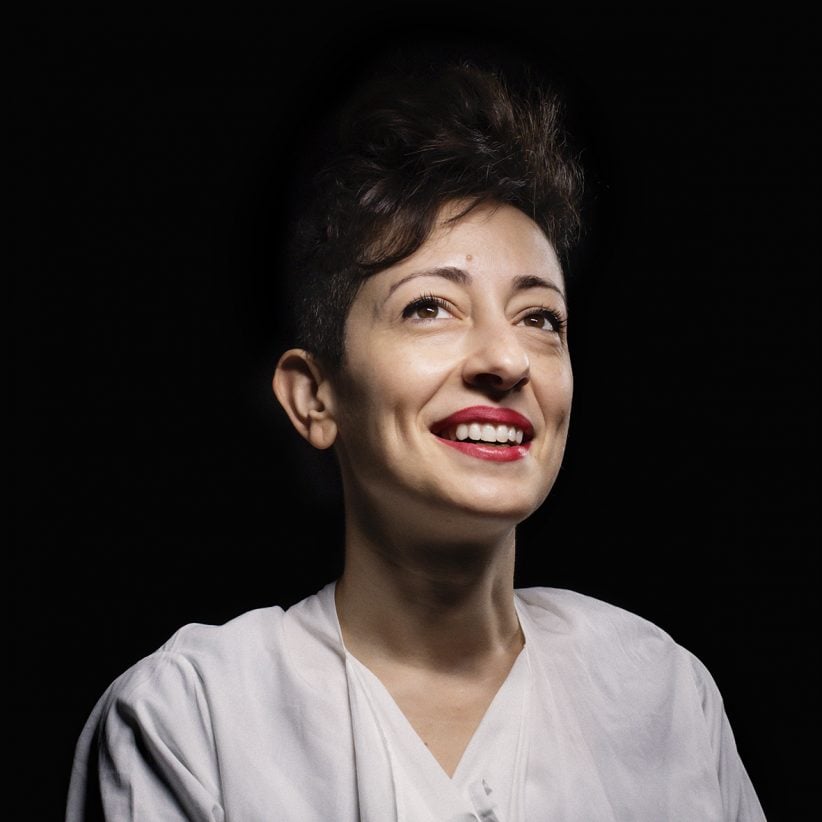
"The zoned city can no longer be sustainable"
Lina Ghotmeh
Founder, Lina Ghotmeh – Architecture, Paris
How has the pandemic impacted architecture and design?
I think this pandemic had impacted first our space-time relation, we had discovered a new spatial dimension through our extensive exploration of the digital immaterial world. This is a new space that may need a new form of architecture and design to render it more humane and more distinctive.
Exploring extensive remote work had also allowed many people to explore the countryside as a better context for working. This highlighted the visceral need we have to be close to nature affecting the relationship we have with the city. We can question here its traditional role as a centralized economic hub. The structure of the city is more than any time, bound to change.
What will the long-term impact be?
Finally, we have concrete proof that the zoned city can no longer be sustainable. It is neither durable nor resilient. We cannot build by segregating functions: nature, living, working, leisure, culture etc. contingent mixing is essential for the adaptability of our living structures.
Homes will become more and more places of work, mutable meeting points; museums more productive places; nature inherent to architecture. The 15 minutes city, the city of proximities, as Paris is working on, is evidence, it will also transform the programmatic regulatory paradigms that underlay our architectural world.
What have you learnt?
I always thought the notion of boundaries between nations is questionable, this virus proved more concretely that the world is deeply interconnected, this applies today to this virus crisis we are all facing but is also a reminder that it applies to more invisible systems that drive the dynamics behind our built world: economic systems, energy consumption, climate change, waste. These have direct consequences on all of us and need to be challenged, addressed at every level professionally & personally.
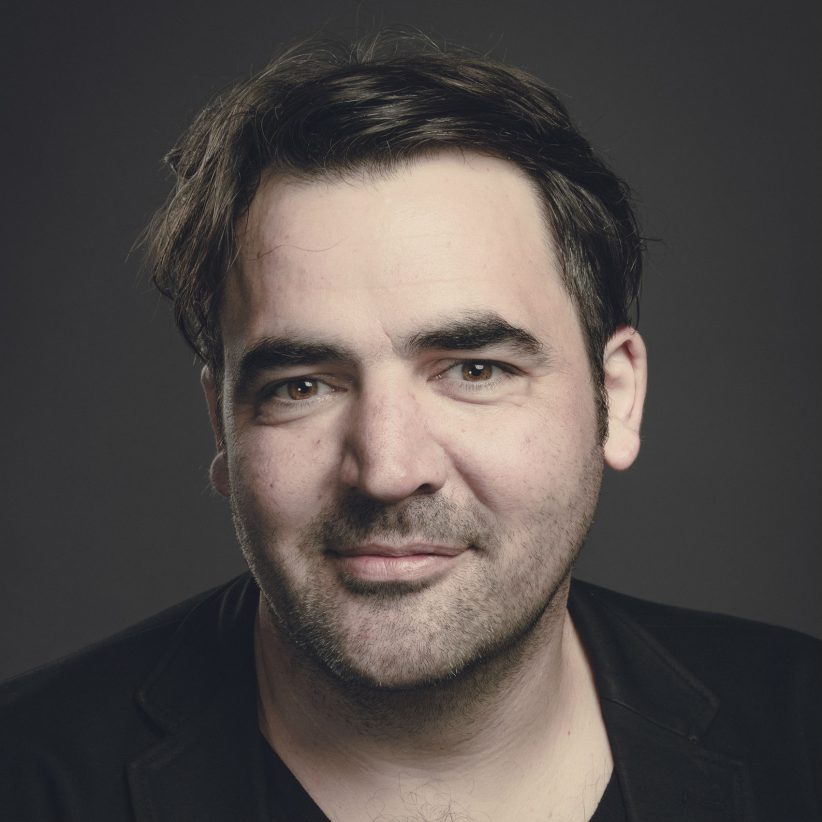
"The pandemic has shifted our perspective"
Sam Jacob
Founder, Sam Jacob Studio, London
How has the pandemic impacted architecture and design?
The pandemic has shifted our perspective, forcing us – if only literally – to look at the world from a different place. It quieted the industry noise a little, that fog that often obscures the context of our actions as designers. No ceremonies, no industry events, a break in the conveyor belt of so-called career progression.
There's been much more focus on the work in hand. And more time to think. It feels like there's been quite a bit of soul searching amongst the design and architecture communities over the past year. Many long overdue issues have come to the fore. But let's see, as we unlock, how much we've really learnt about ourselves, and how our ideas of how architecture and design can remake the world in new and different ways have changed.
What will the long-term impact be?
Feels like there will be quite an impact. A lot of previous plans and assumptions have been thrown into disarray. And whether we like it or not (or whether it's for the right reasons) we're going to have to figure out new ways for design to work in the world. Smaller budgets, fewer blockbusters. Could this mean a design approach that is more nimble, humble, and full of pragmatic imagination? Might it mean a new sharper focus, a directness and a creative response that works within the reality and needs of our circumstances socially, economically, environmentally? We can only hope.
What have you learnt?
I think the key thing I've realised over the last year is the value of relationships. Of working with clients who care, with collaborators who engage in constructive dialogue, with my own team who have gone above and beyond. For all of the myriad difficulties we had, there has been something optimistic and intensely human about the ways we have found to work together.
In some ways, even over Zoom, more intimate and engaged than assembling in boardrooms. Some of the hierarchies and professional silos that usually separate us or set us against each other have softened. Perhaps there's been more understanding of the difficulties inherent in making a good project happen, and recognition of the efforts of everyone involved. Most of all that design process is a process of working together, the sum of the efforts that we put into it.
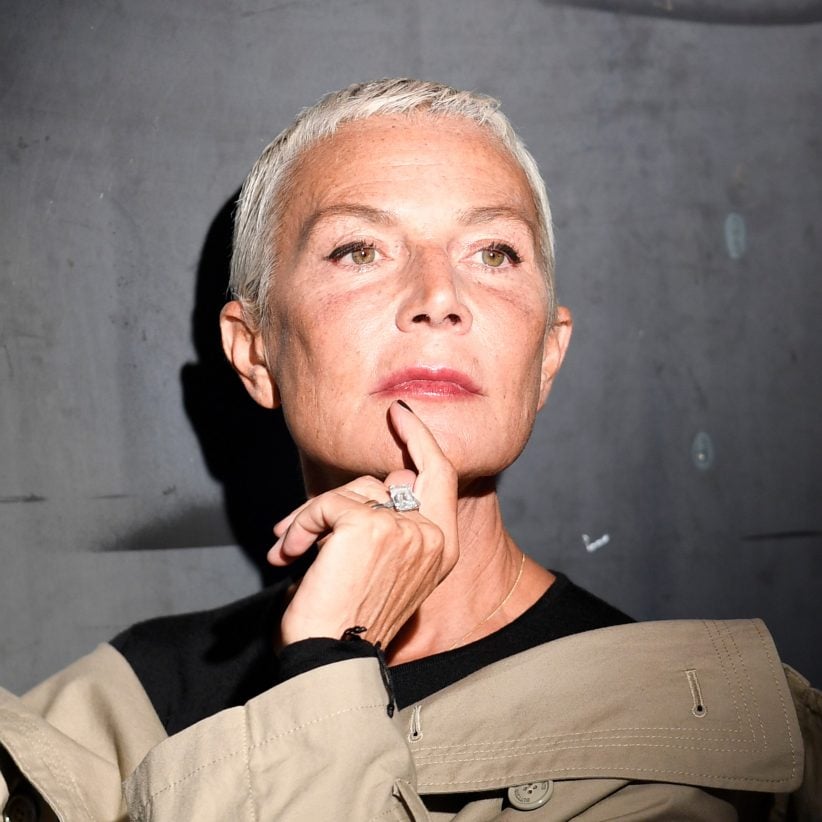
"We have all discovered ourselves unprepared"
Doriana Fuksas
Co-founder, Studio Fuksas, Rome
How has the pandemic impacted architecture and design?
A simple sentence: "Città, less aesthetics more ethics', the 7th International Architecture Exhibition for The 2000 Venice Biennale, curated by Fuksas architects. For more than twenty years we have been reflecting on the cities and on the contemporary house model.
What will the long-term impact be?
With the pandemic, we have all discovered ourselves scared and unprepared, but I believe this was an opportunity to start thinking and reflecting especially on our living spaces and houses.
After an initial moment of great disorientation, we tried to make the most of the emergency by exploring and investigating new design solutions which could adapt both the new and existing projects.
The world of architecture will surely have to keep up with the enormous change, primarily social, that this emergency has led to. The role of the designer-architect can only adapt to the new challenges, using technological innovation to design objects and buildings that adapt to the new way of living, different from the one we were used to.
2020 is the true beginning of the 3rd Millennium for architecture and design, that of a revolution in terms of housing equipment, space distribution, new transport organization, green energy utilization.
What have you learnt?
To appreciate and don't waste but preserve what we have got. I think I have also learnt the importance of the house as first aid, as fluid space, able to accept transformations and to host different functions following different needs.
We are proud of the achievement reached by built 10 years ago: The Rome New EUR Congress Center 'the Cloud' became the biggest Coronavirus 19 vaccination hub in Europe.
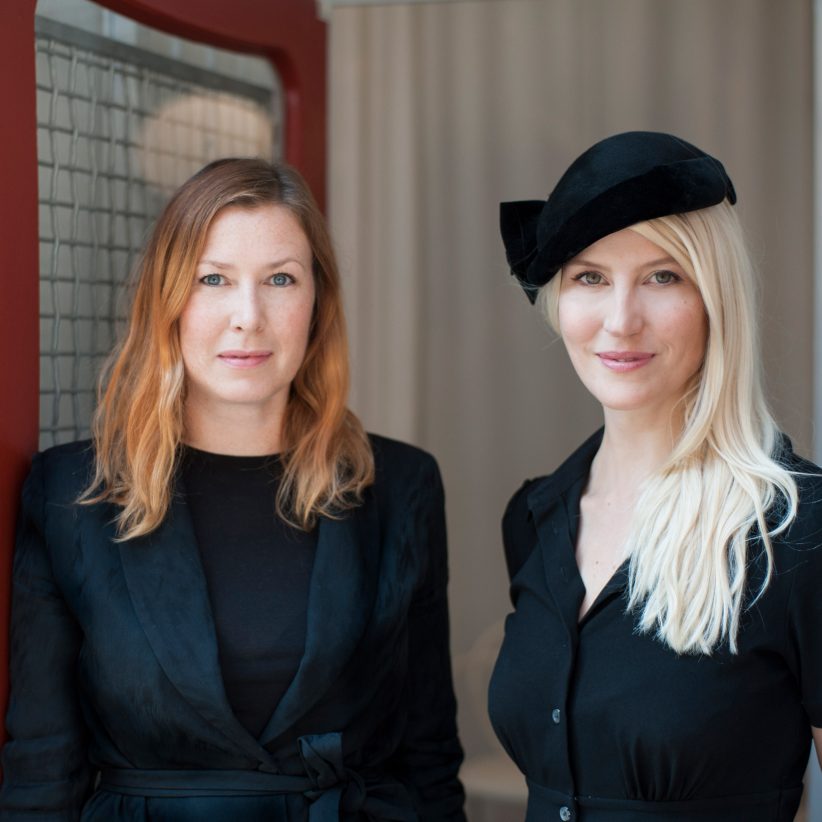
"We've found more time to be creative"
Sofia Lagerkvist and Anna Lindgren
Founders, Front, Stockholm
How has the pandemic impacted architecture and design?
During this time designers have found more time on their hands to be creative and experiment. They have found new platforms for showing and exhibiting and channels to sell their work, of course through social media but also the gallery scene has provided different ways to sell at the high-end market.
We think this will continue and give independence to the individual designer, cutting out the middleman and creating more direct contact between designer and client. Many of the industry's producers have used this year to invest in new production techniques and to restructure.
The design market has previously been focusing a lot on fairs and with this year we see many companies reconsidering their marketing and sales strategies away from big launch events a few times a year and doing business in a more direct and personal way.
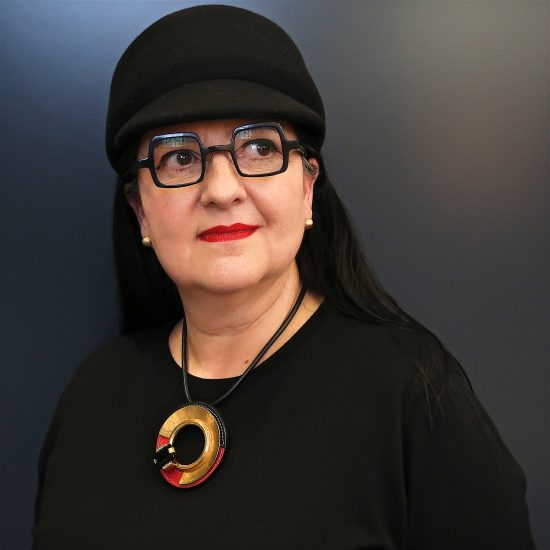
"The future is now"
Maria Warner Wong
Co-founder, WOW Architects, Singapore
How has the pandemic impacted architecture and design?
The pandemic has triggered a series of changes in the world that have revealed the lack of sustainability in design and architecture – unused office space, inadequate home workplaces, insufficient jobs, empty public venues.
What will the long-term impact be?
In the long term, the undeniable wastefulness and damage to society inherent in the paradox of endless growth will be exposed and inescapable. Architects & designers will have to develop better ways of building and providing for communities or be exposed to complicity in global warming.
What have you learnt?
I have realised that we cannot leave it to "someday", the future is now. We should spend more time in nature to heal our sad & cynical soul.
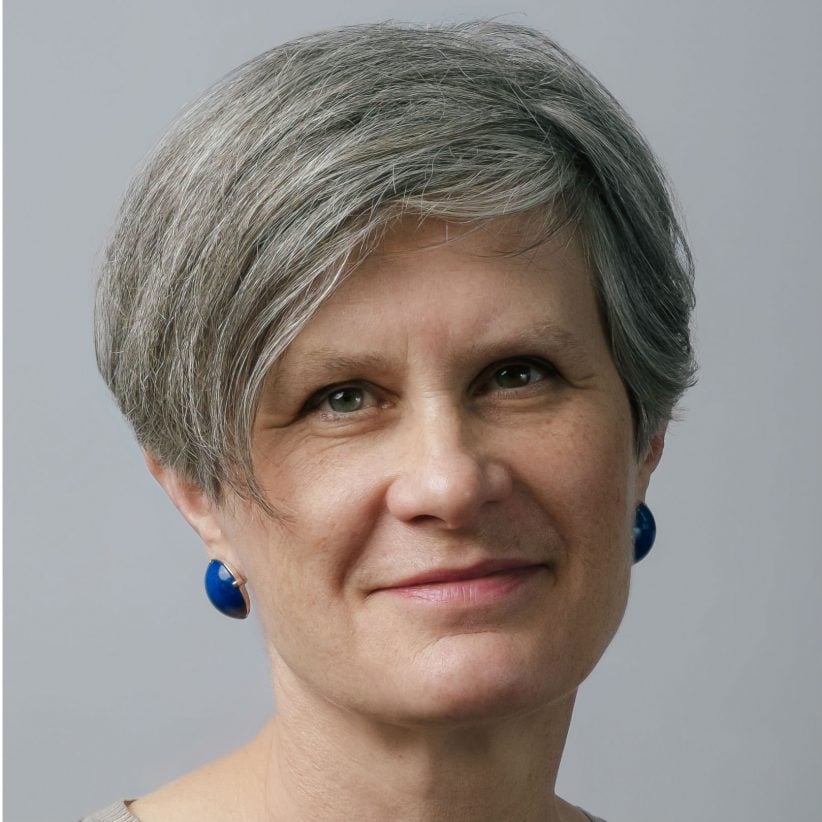
"Coronavirus has been a great leveller"
Sarah Wigglesworth
Founder, Sarah Wigglesworth Architects, London
How has the pandemic impacted architecture and design?
It has made us value space and air. Hopefully, it has reorientated our focus on the fact that buildings are about people. They are not just inhabited sculptures and brand identities. They really have to respond to need.
What will the long-term impact be?
What I'd like to see happen and what may happen are two different things. I'd like to see more people striving for better fitness & health by making better food choices and using self-propelled transit through cities (walking, boarding, cycling). That would free public transport to be safer as pressure on it would reduce.
What might easily happen is that people resort to their cars because they represent a bubble but this would only increase congestion and potentially increase air pollution. The right to roam throughout the UK should be a given as people need to escape, but I suspect this won't happen.
Homes need to be much more flexible and larger to accommodate the various tasks they will have to perform as we work in different modes, places and times. Monocultural buildings such as offices could become redundant. Again, with the market in control, this is unlikely to happen.
Planning-use classes ought to be re-thought as categories no longer seem appropriate (live/work might become a new one). Again, the planning reforms do not take this into account. I'd like the needs of communities to be much more embedded in the process of development.
From Grenfell to pandemics, the economic-social-environmental equation needs to be reimagined I favour of humans and the ecology. Build back better? I hope so but let's see the evidence!
What have you learnt?
Be kind. Every person has other responsibilities which should be understood as part of their life. The world will not fall apart if we recognise and work around them. Corona has been a great leveller.
